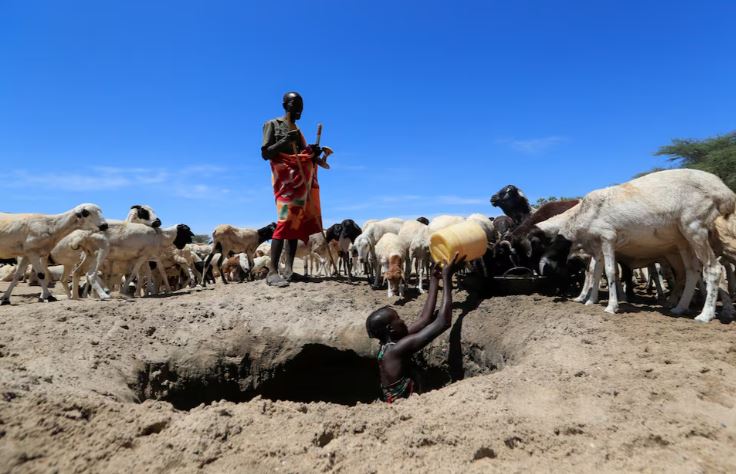Food crisis looms as 2.5 million Kenyans face hunger

Particular concern has been raised over pastoral areas in Turkana, Marsabit, and Garissa counties, where food insecurity is expected to last until at least May 2025.
Over two million Kenyans are projected to face food insecurity and will need humanitarian assistance until May 2025, according to the latest report from the Famine Early Warning Systems Network (FEWS NET).
The report estimates that between 2.5 and 2.99 million people will require food aid from October 2024 to May 2025.
More To Read
- Africa’s agri-food trade more than doubles, but hunger still soars - report
- Kenya hit hard as therapeutic food supplies dwindle
- Explainer: What is the threshold for famine and how hunger is tracked
- UN declares famine in Gaza as over half a million people face starvation
- UN warns of rising hunger across Africa
- From hobby to lifeline: How gardening is becoming a path to food security and resilience
This crisis is expected to peak in February 2025, just before the onset of the March to May long rains.
Pastoral areas in crisis
Particular concern has been raised over pastoral areas in Turkana, Marsabit, and Garissa counties, where food insecurity is expected to last until at least May 2025.
This crisis is largely due to below-average short rains between October and December 2024, which have left livestock herds in poor condition.
As a result, milk availability has been significantly lower than usual, further aggravating the situation.
With limited pasture and water availability, many households in these areas have been forced to adopt negative coping strategies, including skipping meals, to survive.
In other pastoral regions, food insecurity is expected to persist until January 2025 due to inadequate rainfall during the October-December period.
Worsening outlook
Looking ahead to February to May 2025, the food security situation is set to worsen, especially in counties like Tana River, Samburu, Wajir, and Mandera.
The report highlights that this will be driven by both below-average short rains in the last quarter of 2024 and an expected poor performance of the long rains from March to May 2025, which could further worsen livestock conditions.
The report also noted that the anticipated below-average short rains in the months leading up to February will deplete household grain stocks and reduce income from crop sales.
Counties like Makueni and Kitui are expected to be particularly hard hit, with families being forced to rely on desperate coping strategies.
Global weather forecasts point to the possibility of below-average long rains in eastern Kenya, with emerging La Niña conditions adding further uncertainty.
The Kenya Meteorological Department's outlook for January 2025 predicts mostly dry and sunny conditions across much of the country.
However, some regions in the Highlands, Rift Valley, and coastal areas are expected to experience occasional rainfall, though it will likely remain below average.
The forecast also warns of high temperatures across the country, which could lead to heat stress and discomfort, particularly in the afternoons.
David Gikungu, the Director of Meteorological Services, has urged the public to stay hydrated and limit outdoor activities during the hottest parts of the day.
While the dry conditions are expected to aid the harvesting of fast-maturing crops like beans, they will likely reduce water availability in the Arid and Semi-Arid Lands (ASALs) regions, particularly in the northern parts of the country. Gikungu recommended that communities in these areas use water sparingly.
Those in areas that may experience occasional rainfall have been advised to harvest rainwater for both domestic and livestock needs.
Despite these challenges, the prolonged dry spell is expected to benefit solar power generation, which could provide some relief as the country faces an energy demand spike during the hot months.
Top Stories Today













































